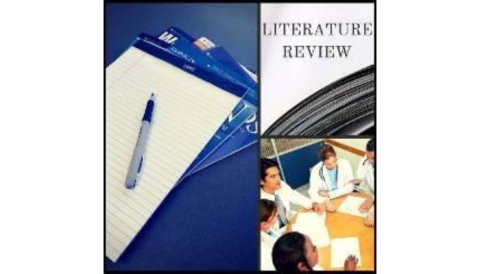Review: Use of a Waterproof Liquid Dressing for Treating Diabetic Ulcers
December 8, 2016
Temple University School of Podiatric Medicine Journal Review Club
Editor's note: This post is part of the Temple University School of Podiatric Medicine (TUSPM) journal review club blog series. In each blog post, a TUSPM student will review a journal article relevant to wound management and related topics and provide their evaluation of the clinical research therein.
Article title: Fabrication of Waterproof, Breathable Composite Liquid Dressing and Its Application in Diabetic Skin Ulcer Repair
Authors: Dong-Lin Xia, MMS; Yan-Pei Chen, MMS; Yu-Fei Wang, MMS; Xiao-Dong Li, BS; Ning Bao, PhD; Hong He, MMS; Hai-Ying Gu, PhD
Journal name and issue: Advances in Skin and Wound Care. November 2016. Vol 29 (11) (pages 499-508).
Reviewed by: Kate Florio, Class of 2018, Temple University School of Podiatric Medicine.
A common complication of diabetes is the development of foot ulcers. Management of these ulcers, compounded with other sequelae, such as ischemia and neuropathy, account for a large portion of health care costs in the United States. A high number of diabetic foot ulcerations become infected which can further complicate a patient’s treatment plan. An important factor in healing and infection prevention is keeping wounds clean and dry. Although liquid dressing has been reported to accomplish these tasks, its effectiveness in the management of diabetic ulcer healing has not been studied.
The authors in this study describe an adequate ulcer dressing as one that can create a moist wound bed, serve as an infection barrier, provide a scaffold for cellular migration, and create an environment protective to newly formed tissue. The authors in this study sought to develop a composite liquid dressing that could achieve these goals and subsequently assess its effectiveness in the healing of diabetic ulcers in rats.
Methods
The composite liquid dressing (CLD) formulated by the authors was made of carboxymethyl chitosan (CMC) and polyvinyl butyral membranes (PVB) dissolved in ethyl acetate and chitosan. The authors tested the CLD for its waterproof capacity when applied in multiple layers of thickness. Other factors such as bacterial barrier properties and blood compatibility were also assessed. The CLD developed by the authors was utilized for treatment in conjunction with Dermlin (DML), a bioinductive wound care formula developed in China.
The rats utilized in the study were divided into 5 groups that received different treatments of either Dermlin alone, CLD with varying levels of CMC, or both. Wounds on the right side of the rats’ bodies underwent treatment, while wounds on the left side received saline solution treatment only and served as a control. Wound sizes, body weight of the subjects, and glucose levels were measured throughout the study. Histologic samples of the wounds were obtained at two points in the study for additional analysis.
Results
The authors determined that waterproofing capability of the CLD increased as the thickness of the CLD increased. Bacterial culture with Serratia marcescens showed that the CLD could adequately resist bacterial infection as compared with the control. Results also showed that the developed CLD was both hemocompatible and biocompatible.
All of the rat subjects showed weight loss after CLD application, but significant weight loss after 16 days of treatment was noted in the CLD+DML group. The CLD+DML group showed a significant acceleration in wound healing after 3 days of treatment compared to the control (saline treatment only). Wound area showed a significant decrease at day 12 upon application of CLD+DML as compared to the groups utilizing CLD alone. There was no significant difference in wound closure rate among the CLD-only groups. Histologic analysis after 7 days showed greater surface epithelium formation in all groups compared to the control. After 12 days, epithelium formation in all groups was thicker than the control group. Immunostaining with an epidermal growth factor (EGF) antibody demonstrated the presence of EGF during the early stages of epidermal regeneration and subsequent decrease in EGF once regeneration occurred.
Discussion
It is important to treat diabetic ulcerations early to prevent infection and shorten the time for wounds to heal. A composite liquid dressing could be easily applied by brush or spray, and can serve not only as an effective barrier to infection and water, but also cultivate an environment conducive to cellular proliferation. The authors determined that while treatment of ulcerations with CLD alone is effective, there was a significantly greater reduction of wound size when the CLD was used in conjunction with Dermlin. The authors deduced that the usage of CLD likely increases the efficacy of Dermlin and reduces the time required for its effects to take hold. The beneficial effects of Dermlin are likely due to its ability to stimulate cellular proliferation and healing via its inductive properties.
Conclusions
The authors demonstrated the effectiveness of liquid dressings in the treatment of diabetic ulcerations. Liquid dressings can be utilized in conjunction with other products, such as Dermlin, to promote faster and more efficient wound healing.
About the Authors:
Kate Florio is a third-year student at Temple University School of Podiatric Medicine (TUSPM). She graduated from Villanova University in Villanova, Pennsylvania with a Bachelor of Science degree in Biology in May 2014. In college, Kate was heavily involved as a resident assistant and tour guide on campus. She additionally took part in both ecological and medical research projects at both Villanova University and the University of Pennsylvania as a research intern.
Dr. James McGuire is the director of the Leonard S. Abrams Center for Advanced Wound Healing and an associate professor of the Department of Podiatric Medicine and Orthopedics at the Temple University School of Podiatric Medicine in Philadelphia.
The views and opinions expressed in this content are solely those of the contributor, and do not represent the views of WoundSource, HMP Global, its affiliates, or subsidiary companies.








